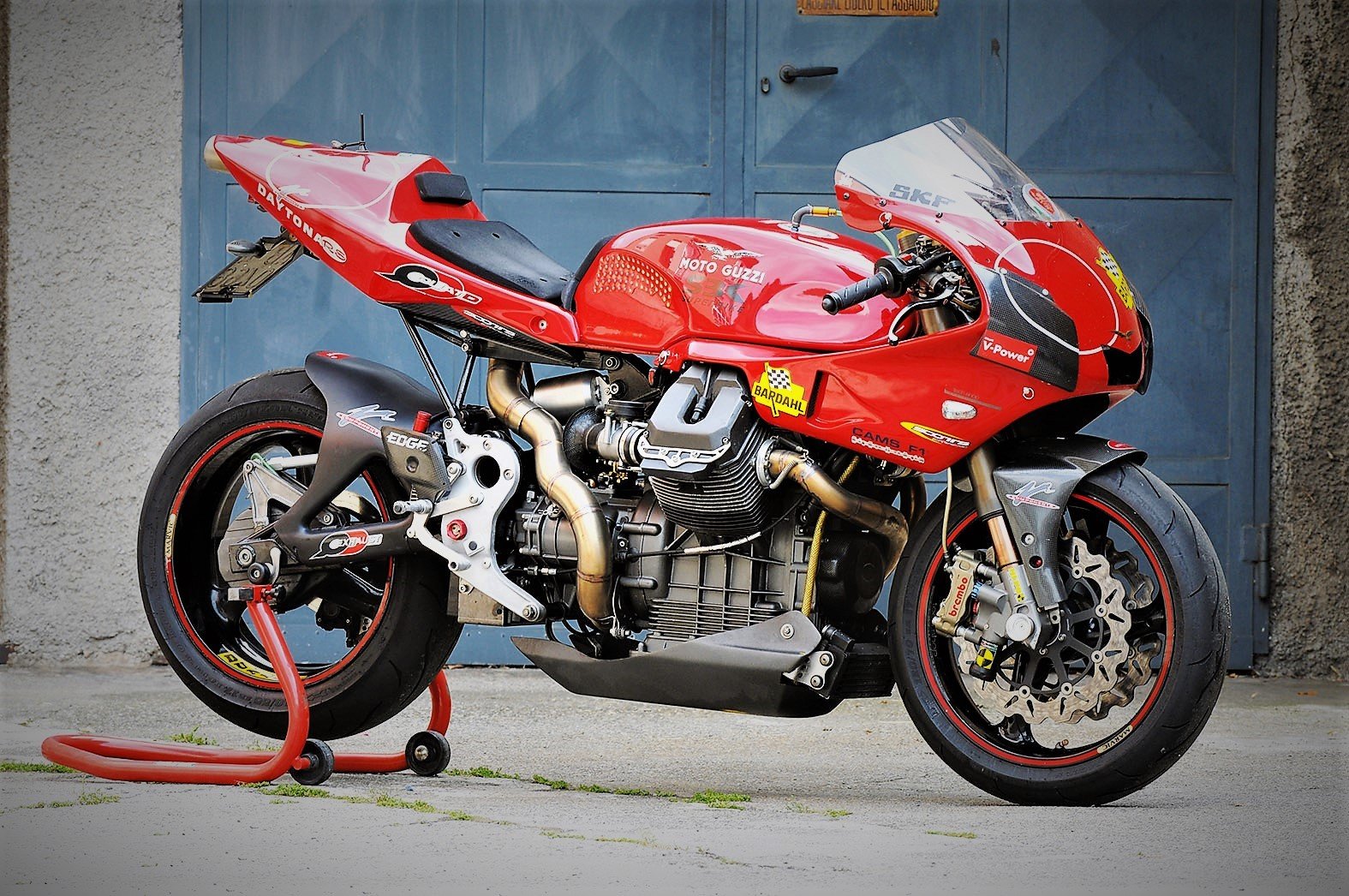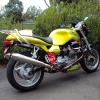-
Posts
5,230 -
Joined
-
Last visited
-
Days Won
268
Content Type
Profiles
Forums
Events
Gallery
Community Map
Everything posted by Lucky Phil
-
So you didnt think it was sort of important that you would mention the bike is fitted with a power commander????????? It takes you half the thread to mention you recently replaced the fuel filter!!!!! Seriously, people come on here for troubleshooting advice and help and leave out the basic but highly relevant information. This is why I'm reluctant to get involved too much in these troubleshooting issues and waste my valuable time. Ciao
-
Just make sure they incorporate aluminium inserts into mount points esp ones like the valve and alternator covers where the tabs are smaller. I'm sure there would be a market fora carbon V11 tank with all the Ethanol tank swelling issues about. Talking about tanks they should also be treated with a liquid liner before use to make doubly sure they arent affected over the long term. Ciao
-
The Ohlins stuff is covered in the V11 workshop manual update. I can email it to you if you want. Ciao
-
If you are running Unleaded fuel you can forget about looking at the exhaust tips for mixture information. That grey colour you used to see was lead deposits and the black you see now is the carbon thats a byproduct of low speed running and the warm up rich fuel map even if the mixture is correct. Ciao
-
Very true docc. My set of sideflow throttle bodies for the Daytona engine were like this. Stripped one of the screw heads off. Was very fortunate the others came out(on the bench) My advice is plenty of heat with a small propane torch and all should be ok. I did manage to get out the broken one without damage by an easy out and the heat but it was a nervous task Ciao
-
Because one comes standard in the Guzzi tool kit with every new bike along with a grease gun for the drive shaft fittings, a multimetre for the electrics and a tether to stop the bike floating away if you ever remove the flywheel. Ciao
-
You replace wheel bearings every year!!!! no wonder the bearing bores are shot. How many miles do you do annually? Ciao
-
Not a bad price on that wheel docc with a disk and drive assy even for 2015. Ciao
- 5 replies
-
- v11
- moto guzzi
-
(and 6 more)
Tagged with:
-
Probably cheaper to buy a good second hand wheel. If you resleeve you would sleeve it to take the std bearing or bore the wheel hub to take a bearing with the same width and ID but larger OD if there's one available. Ciao
-
But who says its lean, images can be misleading but it looks fine to me. The r/h may well be too rich. The only way to tell with any accuracy is to lambda probe each cylinder. Unless you're prepared to do that then its just going to be a drawn out proposition. Are we willing to wait for a few thousand miles to see the color of the ports to ascertain whether or not its corrected every time you make an adjustment or try something, because thats what it will take? I'll watch the rabbit get chased down the hole with interest. Ciao
-
Unplugging the TPS and trying to rev the engine is a pointless test. Of course it will not rev and cough etc the same as not getting enough fuel because that's exactly whats happening. To test the TPS you need to use an Ohmmeter on it and look at the resistance shift verses the positional rotation. Ciao
-
Its far more complicated than fuel in temp out. There are a lot of variables some of which are compression differences, squish clearance differences, varying shapes of inlet ports that give different amounts of turbulence. All of these and much more affect burning efficiency and therefore what you see in the exhaust port and it all varies depending on what speed and load is on the engine. For a road bike particularly there is an acceptable window of operation and as long as the engine performs well, carburates well and doesn't use too much fuel then delving into exhaust port colors is a little pointless from a practical point of view. Race engines are different of course but they are operating in a much narrower window right up against the limits. The chances of burning an exhaust valve on a road bike due to tuning issues are pretty remote. If the map is that bad it'll be horrible to ride. Of course reading plugs and ports on a road bike is fairly useless anyway unless there is an extreme issue. thats why racers always used to do a plug chop at the end of practice and the straight as low speed running everywhere else just gave useless readings. Ciao
-
I wish I had the time to chase this kind of detail on a perfectly running bike. I'd take the spare time and forget the exhaust colour. Ciao
-
Good luck with that, the injector pulse duration at idle is probably only a couple of milliseconds. A Ducati 888 is 12.43 milliseconds at 7000 rpm peak torque. Ciao
-
How do you know its running lean on one cylinder? Ciao
-
+1 Ciao
-
Now you tell us LOL. Don't forget the fuel tank pick up filter screen. Ciao
-
Anyone ever heard of "bad" fuel from petrol stations with old contaminated storage tanks? Not everyone lives in big sterile clean European cities. Ciao
-
I'm always amused when everyone goes for the complex stuff first. How about the fuel filter? Of course if you have a fuel pressure test gauge that would be the first thing to check.Not saying its the filter but starting with the basic, simplest/cheapest option is troubleshooting 101. I've had Ducatis do this, enough fuel for idle but not enough for anything else. Ciao
-
Oil pump air lock, happens sometimes but pretty rare. How long did you have the pan off for? im not a big fan of letting the oil drain for lengthy periods or pulling the pan as it just increases the likely hood of oil in the pickup tube and pump also draining out and the pump losing its prime. ciao
-
Why dont you just contact him here? http://www.fastguzzi.nl/ Ciao
-
42,000 klms and going fine. Still running in.
-
Worrying. Ciao
-
So finally got to the bottom of this gearbox housing crack. I'm down around 1.5 mm deep on a 3.5 mm thick case. Its a strange thing, something tells me it may be production related as opposed to consequential. No proof of this just a feeling in the water. Like the crack is generated during the casting cooling process. The area it originated from is the tightest casting corner I've ever seen. I dont think its from the squeeze of the mount bolt and in reality there is a front engine mount and the upper gearbox mount (that seems to crack) and the lower gearbox mount sharing what is a modest load in engineering terms. Seems well triangulated mounting to me and the thought that the cracking is limited to the green frame bikes without the additional lower frame to crankcase members is blown away as this is from a later bike as well. Hmmm, dont know. Next step is to see my friend the expert crankcase welder and machinist. Still there. ground out. Ciao





